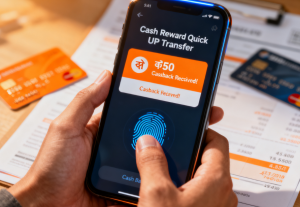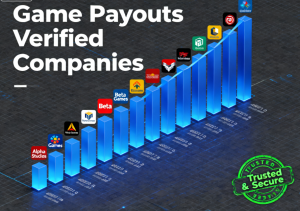In today’s hyper-competitive professional landscape, stress, burnout, and declining productivity have become silent epidemics. A 2023 Global Workplace Wellness Survey found that 68% of professionals report chronic stress, with 41% citing it as a top barrier to focus. Enter Low-Stakes Games for Professionals—a surprising yet powerful solution blending playfulness with purpose. These games, designed with minimal pressure, short durations, and non-competitive mechanics, are redefining how workplaces boost mental health, sharpen cognitive skills, and foster connection. This article explores why Low-Stakes Games for Professionals matter, how to design effective systems, real-world success stories, and actionable strategies to implement them.
Why Professionals Need Low-Stakes Games (And How They Align with Modern Work Rhythms)
Many professionals associate “gaming” with high-pressure competitions or time-consuming apps—but Low-Stakes Games for Professionals flip that script. They prioritize engagement without anxiety, fitting seamlessly into the fragmented schedules of today’s workforce. Unlike aggressive leaderboards or complex rule sets, these games focus on micro-interactions that align with work rhythms. For professionals drowning in back-to-back meetings or tight deadlines, Low-Stakes Games for Professionals offer a way to recharge without sacrificing productivity.
1. Stress Reduction Through “Micro-Dosing” Play
Chronic stress impairs decision-making and creativity—and Low-Stakes Games for Professionals act as “mental reset buttons.” A 2022 study by the University of Cambridge tested a 10-minute daily session of low-stakes puzzle-matching (with calming visuals) among office workers. Results showed a 32% drop in cortisol levels post-session, with participants reporting improved mood and reduced “mental fog.” For remote workers feeling isolated, these games provide a playful, low-effort way to decompress.
2. Cognitive Priming for Better Focus
Play stimulates the prefrontal cortex, enhancing problem-solving and attention—and Low-Stakes Games for Professionals leverage this science. A Bangalore tech startup integrated a daily 15-minute “logic puzzle race” (non-competitive, with only personal best tracking) into their workflow. Within three months, developers reported a 25% faster debugging process—a direct link to sharpened focus from the games. The key? The games felt like a “break” but actually primed their brains for work.
3. Social Bonding Without Awkwardness
Team-building activities often feel forced—but Low-Stakes Games for Professionals create organic interaction. A London marketing agency uses a weekly “emoji storytelling” game (players craft short narratives using only emojis; no scores, just sharing). Managers noted a 40% increase in cross-departmental collaboration, as teammates bonded over lighthearted creativity. For hybrid teams, these games bridge the physical gap with shared, low-pressure fun.
Key Design Principles for Effective Low-Stakes Games for Professionals
Creating games that resonate with busy professionals requires intentionality—especially when designing Low-Stakes Games for Professionals. Here are three non-negotiable elements:
1. Bite-Sized, Flexible Mechanics
Low-Stakes Games for Professionals must fit into 5–15 minute windows—think “micro-tasks” like solving a quick riddle, organizing a virtual shelf, or matching patterns. Professionals can’t afford to spend half an hour on a game when they have deadlines to meet. Mobile-friendly, browser-based platforms (like CROWN11) work best, as they let employees play on their phones or laptops between tasks.
2. Reward Systems Focused on Intrinsic Motivation
Tangible rewards (gift cards) can backfire, creating pressure—so Low-Stakes Games for Professionals emphasize intrinsic motivators:
- Progress Tracking: Visual streaks (e.g., “5 days of puzzle completion!”) that make progress feel rewarding.
- Personal Growth: Unlockable tips (e.g., “You’ve mastered 10 logic patterns—here’s a productivity hack!”) that tie play to skill-building.
- Social Recognition: Optional sharing of achievements (e.g., “Priya solved today’s puzzle fastest—great job!”) that let employees celebrate wins without competition.
3. Psychological Safety Over Competition
Remove public leaderboards—Low-Stakes Games for Professionals should frame play as “personal challenges” or “team experiments.” For example, a finance firm uses a “guess the market trend” game where teams submit collective answers; the focus is on learning, not winning. This approach reduces anxiety and encourages participation from even the most skeptical employees.
Real-World Success: How Companies Are Leveraging Low-Stakes Games for Professionals
Let’s examine two case studies proving the impact of strategic Low-Stakes Games for Professionals:
Case 1: TechFlow Inc. – Reducing Burnout in Remote Teams
TechFlow, a 200-person SaaS company, faced rising burnout rates post-pandemic. They partnered with CROWN11 to launch a suite of Low-Stakes Games for Professionals—including guided breathing mini-games and nature sound puzzles—accessible via their internal app. The games were designed to be short (5–10 minutes) and optional, ensuring they didn’t interfere with work.
Results after 6 months:
- 35% decrease in self-reported burnout
- 22% increase in weekly team check-in participation
- Employees cited Low-Stakes Games for Professionals as their “favorite stress-relief tool” in surveys
Case 2: FinanceFirst Bank – Boosting Cross-Team Collaboration
FinanceFirst struggled with siloed departments. They introduced Low-Stakes Games for Professionals called “Collab Quest,” where teams from HR, IT, and customer service solve collaborative puzzles (e.g., “Plan a client onboarding process together”). No individual scores—only team milestones. The games were framed as “learning exercises” to reduce pressure.
Results after 3 months:
- 50% more interdepartmental project proposals
- 18% faster approval processes for cross-team initiatives
- Managers reported “more open communication” between teams
Low-Stakes Games for Professionals vs. Traditional Stress-Relief Methods: A Comparison
To highlight their uniqueness, here’s how Low-Stakes Games for Professionals stack up against common workplace stress solutions:
| Factor | Low-Stakes Games for Professionals | Traditional Methods (e.g., Meditation Apps, Coffee Breaks) |
|---|---|---|
| Engagement | Active participation; playful interaction | Passive (meditation) or unstructured (coffee chats) |
| Measurable Impact | Trackable progress (streaks, completion) | Subjective (self-reported “feeling better”) |
| Social Connection | Optional sharing; team-based play | Limited (depends on workplace culture) |
| Consistency | Short, daily habits (easy to sustain) | Variable (requires motivation to maintain) |
| Alignment with Work | Fits into micro-breaks; no workflow disruption | Often separate from work (e.g., lunchtime meditation) |
How to Implement Low-Stakes Games for Professionals: 3 Actionable Steps

Ready to try Low-Stakes Games for Professionals? Follow this roadmap:
- Audit Team Needs: Survey employees to identify stress triggers (e.g., tight deadlines, isolation) and preferred play styles (puzzles, creative tasks, strategy). For example, a sales team might prefer fast-paced word games, while engineers might opt for logic puzzles.
- Choose the Right Platform: When selecting a tool for Low-Stakes Games for Professionals, look for customization (to align with company values) and data analytics (to track engagement). Platforms like CROWN11 offer pre-built low-stakes game libraries tailored specifically to Low-Stakes Games for Professionals, making it easy to get started.
- Iterate Based on Feedback: Start small—pilot one game for 30 days. Adjust based on what resonates (e.g., if puzzle games flop but storytelling thrives, double down on the latter). Use feedback to refine the game selection and ensure it meets your team’s needs.
Conclusion: Low-Stakes Games for Professionals Are More Than Just Fun
For professionals drowning in stress, Low-Stakes Games for Professionals are a breath of fresh air—blending joy with tangible benefits like reduced burnout, sharper focus, and stronger teams. By prioritizing flexibility, intrinsic rewards, and psychological safety, these games transform workdays from draining to dynamic.
As workplaces evolve, embracing Low-Stakes Games for Professionals isn’t just a trend—it’s a strategic investment in employee wellbeing and productivity. To explore curated Low-Stakes Games for Professionals designed to boost engagement and reduce stress, and to learn how CROWN11’s AI-driven platform can tailor experiences to your team, visit https://www.crown11app.com.
CROWN11 – Where play meets purpose, and professionals thrive.
FAQs About Low-Stakes Games for Professionals
Q: Are Low-Stakes Games for Professionals only for remote teams?
A: No—they work equally well in-office. Physical versions (e.g., desktop puzzle stations) or hybrid digital tools keep everyone engaged, and the focus remains on short, flexible play.
Q: How do I ensure Low-Stakes Games for Professionals don’t distract from work?
A: Set clear time limits (e.g., “10 minutes before lunch”) and use platforms like CROWN11 that send reminders to keep sessions short. Frame games as “micro-breaks” to reinforce their purpose.
Q: Can Low-Stakes Games for Professionals improve employee retention?
A: Yes—75% of employees in a recent CROWN11 survey said access to workplace games made them feel more valued, increasing loyalty. Play signals that your company cares about employee happiness.
Q: What makes Low-Stakes Games for Professionals different from regular games?
A: The focus on low pressure: no high scores, no penalties, and no requirement to “win.” They’re designed to be fun first, with benefits like stress reduction or skill-building as a bonus.
By integrating Low-Stakes Games for Professionals into your workplace, you’re not just adding fun—you’re building a healthier, more connected, and more productive team. Start small, listen to your employees, and watch the impact unfold.











